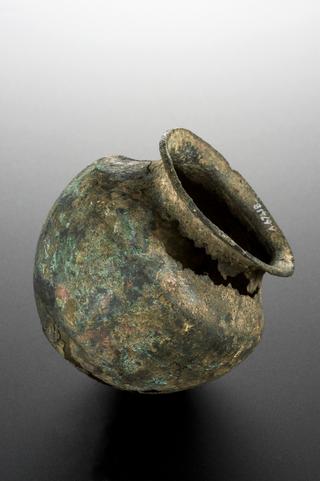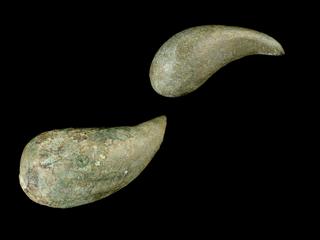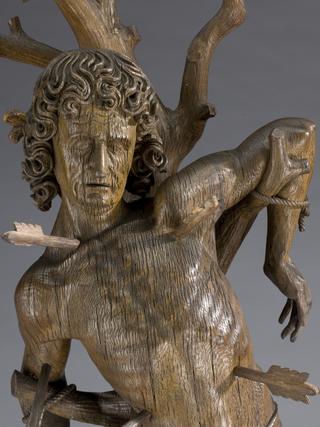
Bronze cautery probe
- Made:
- 199 BCE-500 CE in Roman Empire




Olive-ended probe or cautery, bronze, Roman
The bulb at one end of the probe is known as an olive. This part was used to apply medical treatments to wounds, eyes and ears as well as to apply cosmetics. Recent research has suggested that ‘olives’ were standardised and were a way of measuring gaps in the body. The square end may have been used as a cautery to apply heat to stop wounds bleeding and assist healing.
This object came from the private collection of Dr Noel Hamonic (active 1850-1928), and was sold by Hamonic’s sons in two parts to Henry Wellcome, the first in June 1928 for £4,400 and the second in July 1928 for £803. The collection consisted mostly of surgical instruments and pharmacy ware.
Details
- Category:
- Classical & Medieval Medicine
- Collection:
- Sir Henry Wellcome's Museum Collection
- Object Number:
- A63124
- Materials:
- bronze
- Measurements:
-
overall: 3 mm x 108 mm x 3 mm,
- type:
- probe
- credit:
- Loan, Wellcome Trust (Hamonic Collection)




